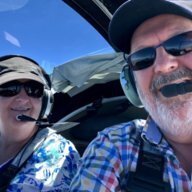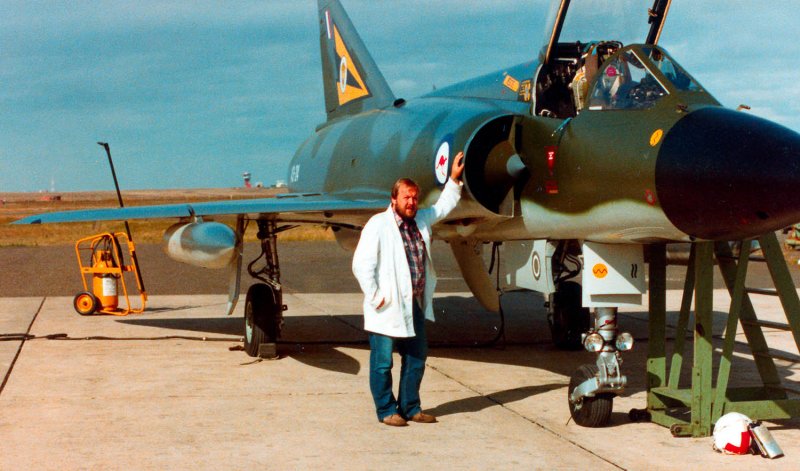-
Posts
113 -
Joined
-
Last visited
Content Type
Profiles
Forums
Gallery
Downloads
Blogs
Events
Store
Aircraft
Resources
Tutorials
Articles
Classifieds
Movies
Books
Community Map
Quizzes
Posts posted by Nico13
-
-
Hi all,
Well I'm the new guy on the block in this discussion only three hours into my training.
Having said that I'm a button pusher and just love the tech behind all this stuff so I decided to look at this stuff well in advance of needing it.
Downloaded OZ R for a start and had a bit of a play but a couple of days later my Instructor showed me AV Plan so I thought I'd look at that as well.
Now keep in mind I'm just using these in simulation type situations, I didn't or haven't given OZ R a good try as yet as a couple of things just didn't seem to work for me right off.
AV Plan on the other hand had everything just seem to fall into place and personally I found the interface quite intuitive and after three weeks of the trial I have only just downloaded the manual to look at.
On that note I do work with computers all day at work, eight screens and lord knows how many different programs, not an IT person but a Laboratory worker so that helps I guess.
Again having said all of that it would seem I should go back and have another look at OZ R and give it a fair trial before it runs out.
Thanks for all the comments, very helpful for me at this stage, looking forward to using one or the other in the not to distant future.
-
 1
1
-
 1
1
-
-
Thanks Nightmare,Your procedure for joining a circuit starts at 10nm with your inbound call on the CTAF for that aerodrome. At 3nm and within sight of the field you should be at least 500 ft above circuit height, bearing in mind that some aerodromes have high power aircraft circuit heights of 1500ft, so you would need to be 500ft above that. If you know the runway in use, make your intentions known on the radio, eg: "Caboolture traffic, lightwing 1234, overflying from the west joining crosswind runway 12, Caboolture". With practice and experience, comes fluency and competency.May I suggest that when you are alone, run scenarios in your head, and verbalize the calls that you would have to make at each stage of the flight. That technique helped me in the early days. I would take an imaginary trip from one field to the other, saying all the radio broadcasts that I would have to make starting from the Taxi call, to the exited the runway and taxi calls at the other aerodrome. You will make heaps of mistakes, but better to get your head around these calls on the ground than in the air. If you are comfortable and confident with the radio, your instructor will be very happy and you will be well on the way to gaining your certificate.Yes these are the procedures we are using from the 10 NM out.
And yes the practice calls in the head is also my approach to the point that my instructor commented last flight, my third only that he was very happy with my calls.
I told him they had been going through my head for the last two weeks.
-
My Dad was in the RAAF during WWII, he was ground crew LAC on Kittyhawks at Tarakan.
I always thought as a kid he flew them and always wanted to fly like my dad.
I found out when a little older he was the guy who kept them flying, it didn't lower pride in him or the want to fly.
I spent ten years working at Avalon on Mirage and then FA18A's when they first arrived. Have flown all sorts of RC planes and helicopters.

It just took me a while to get my act together, about twenty eight years more.

-
 1
1
-
-
This would have been my question as I'm only three lessons in to my training each return to circuit has been over the top +500 for a mid field cross wind join.You are correct assuming the aircraft was already at circuit height but what if an aircraft was overflying the active side (Circuit height + 500ft) to come in for a mid-field crosswind join? I think its a smart idea waiting until late downwind to depart/climb. Personally I would try and depart upwind where possible.So that would be a candidate for a coming together on a down wind climb if everyone wasn't making the right calls and fully alert.
And I quote my instructors words of an example where one guy was a bit dyslexic when it came to entering the local traffic frequency and thinking he was doing the right thing with his calls, but no one could hear him and when confronted on the deck re his apparent lack of communications the error was discovered.
With all good intentions things can still go pear shaped, good old Murphy.
Stay alert.
-
 1
1
-
-
Thanks Tony

-
 1
1
-
-
Hi Guys,
Thanks for the welcome, yes the training is happening at Lethbridge with Golden Plains Aviation.
They have a Tecnam Eaglet G5 and a Pioneer 300 Kite, a couple of very nice little sport aircraft.
Have only flown the Eaglet so far the Kite comes a bit later.
Cheers
-
 1
1
-
-
Hi all,
Just a quick one to introduce myself.
Well it's bucket list time for me, no I'm not on the slippery slope yet, at least I hope I'm not, just doing something I should have done thirty years back.
I messed around the edges for a long time with friends flying powered and gliders but always told myself it was too exi to do it properly.
I worked in the industry for ten years at Avalon when it was the Government Aircraft Factories on Nomads, Mirage111 servicing for the RAAF and saw the first of the FA18's in.
That was a lot of years back and now it's my turn to fly, commenced training about three weeks back and loving it.
-
 1
1
-




Comparison of OzRunways vs. AvPlan EFB on iPad
in Instruments, Radios and Electronics
Posted
I was just looking at the software as you can learn a lot from the maps on there as I don't have maps of my own at this stage.